Like many places on the West Coast, before 1964, when the Murchison Highway was opened to vehicular traffic, the only access was via the Emu Bay Railway. However, Tullah wasn’t on the Emu Bay line, and like the silver town of Magnet, it relied on a tramway spur for a link to the outside world. The tramway represented the pioneer days of Tasmania’s west coast when small mining communities were very isolated.
Today, Tullah is a tourist hub with hydroelectric works and dams as focal points. But before those schemes, its existence was due to mining.
Silver-lead discoveries were prominent in the 1890s on the west coast of Tasmania. In 1891, William Robert Bell found a rich silver lode in the valley of Magnet Creek, not far west of Waratah. Bell’s find followed the discovery of the silver-lead fields of Zeehan, which were opened in the late 1890s.
In 1892, prospector Tom Farrell found some galena on the base of the mountain’s eastern slope named after him. He pegged a reward claim near his find, but the ore was patchy, and he soon moved on.
In 1897, the Innes brothers, Josiah and Edward, discovered major ore bodies on the western flank of Mount Farrell while surveying and cutting a track from Liena, near Mole Creek, to the new mining fields at Rosebery. Their find was rich in galena, commonly lead and silver ore. Mount Farrell is 27 miles south of Guildford Junction and 23 miles from Zeehan.
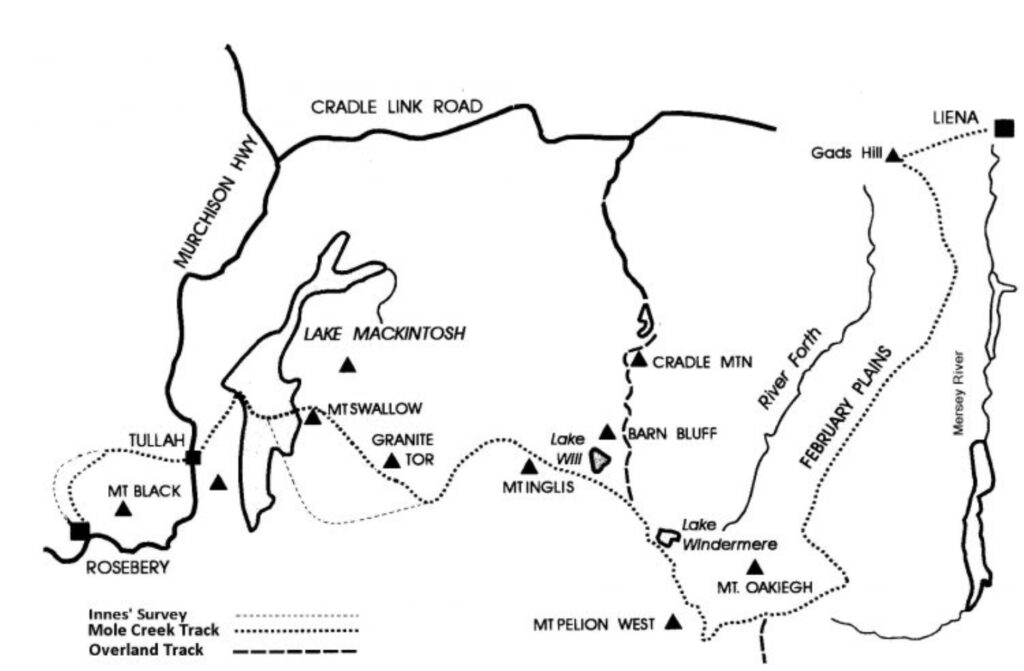
Along with William Aylett, they pegged out two claims on the western flank of Mount Farrell, which proved far more prosperous than Tom Farrell’s original find.
The North Mount Farrell Company was formed, and mining commenced in 1898. A township was established, called initially Mount Farrell. However, in 1901, the government department changed the name to Tullah without consultation. The name has Aboriginal derivations meaning “meeting of the waters”. Several shafts, adits, drives and winzes were used to work the single discontinuous lode. The mine went as deep as 1,000 feet (304 metres), one of the deepest on the West Coast.
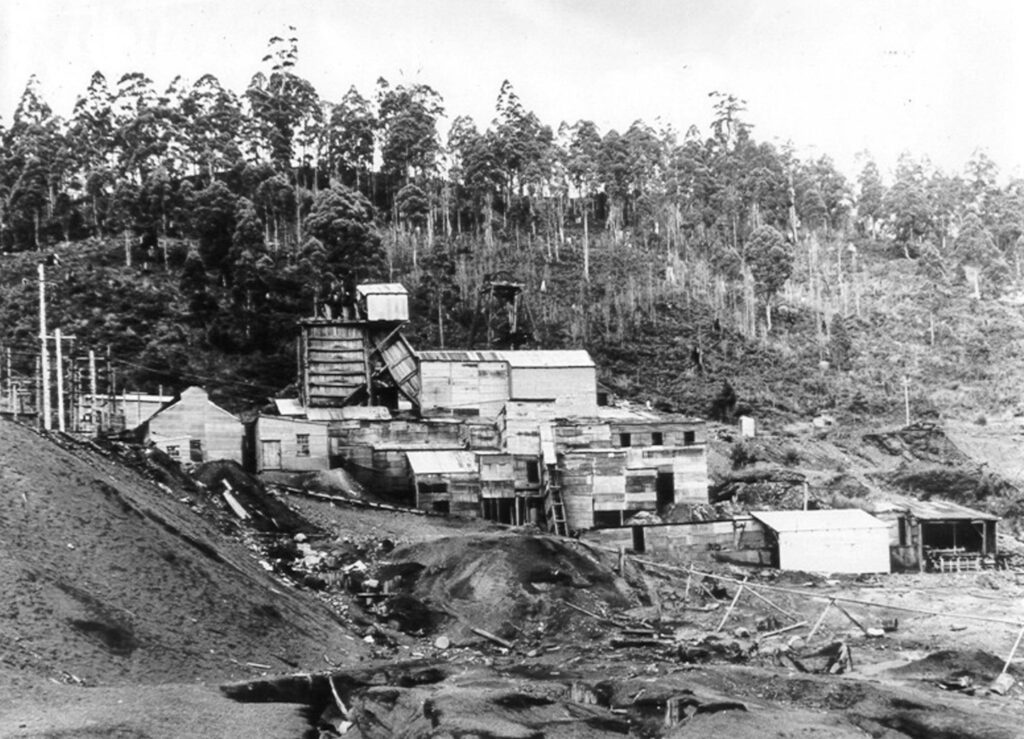
By 1906, the mine produced more than 430,000 ounces of silver and 4,000 tonnes of lead. The galena was 63 per cent lead and produced 60 ounces of silver to the ton. Lead was in significant demand for many things, particularly bullets for the wars and a performance booster in petrol.
As with all the mineral discoveries on the West Coast, transporting the ore to market was the biggest hurdle. Only high-grade Mount Farrell lead and silver were taken by pack horses to the Emu Bay Railway (EBR) line near the old Pieman Bridge over the river.
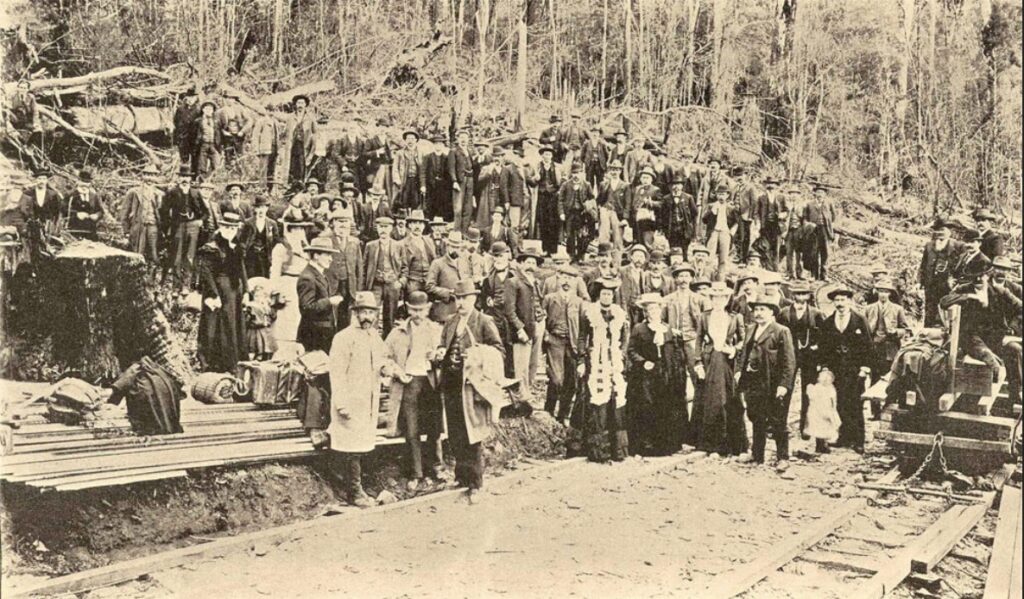
A wooden horse-drawn tramway was built in 1902 from the EBR at Boco to the mines. As mining grew and prospered, Dunkley Brothers constructed a new two-foot gauge steel railway line in 1909. They also gained the right to run the tram for three years. The new 81/2 mile line followed the Pieman River to connect with the EBR at Boco, now known as Farrell Siding.
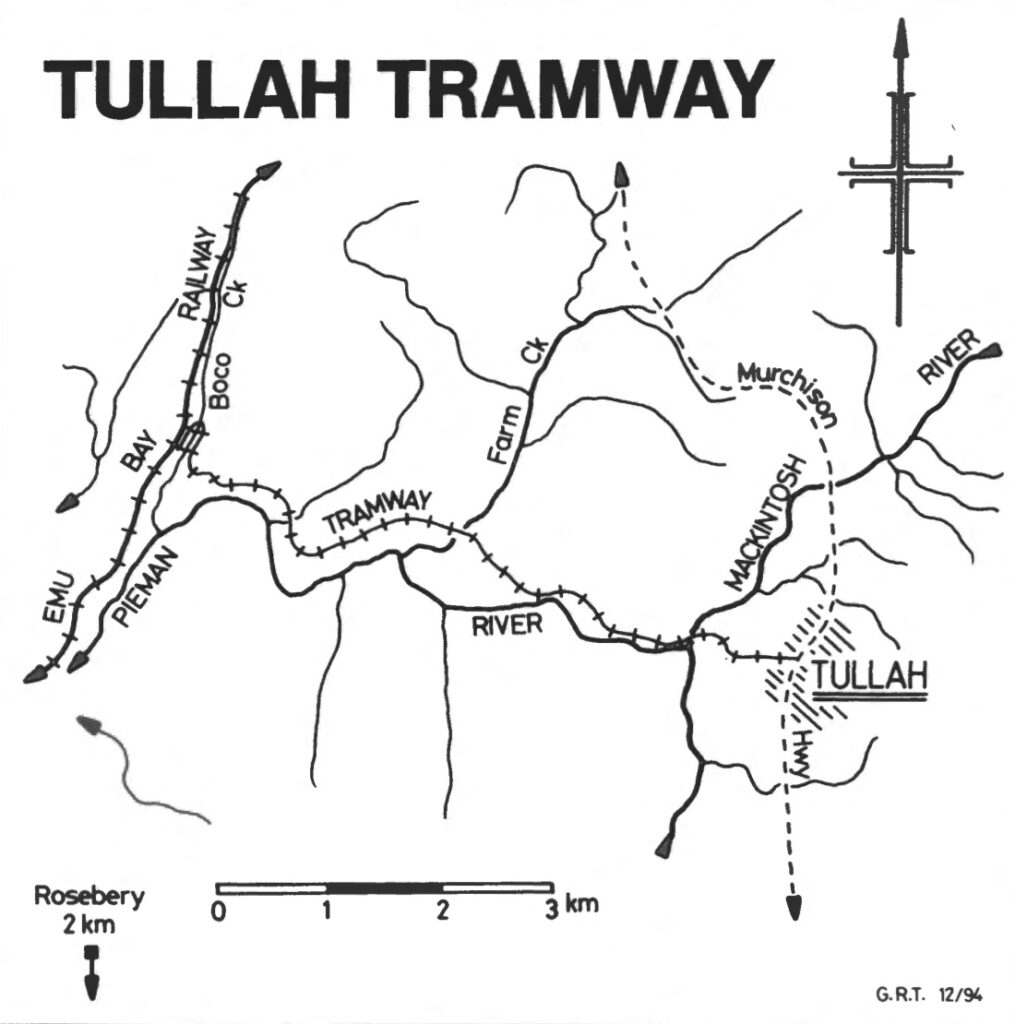
Several locomotives were used until November 1924, when a new 6-ton Fowler locomotive called Wee Georgie Wood arrived to replace ageing locomotives. Pleased with the operation of Wee Georgie Wood, a second Fowler locomotive followed in 1928, called Wee Mary. Both locomotives shared the workload until 1946 when Wee Mary was retired and used for spare parts to upgrade and rebuild Wee Georgie Wood.
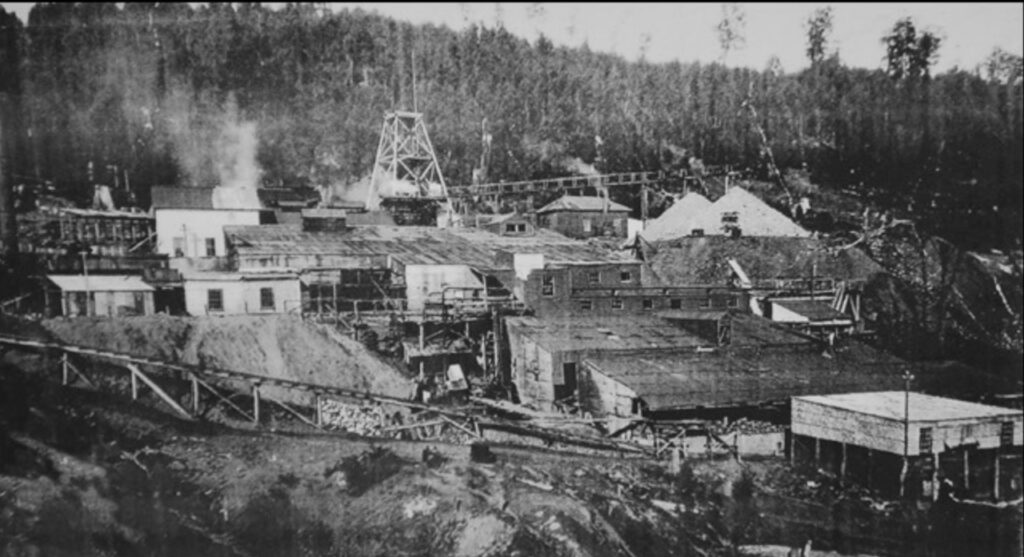
The factory workers named it after the famous English comedian who also was of a diminutive size. John Fowler and Co. in Leeds, England, manufactured the locomotive, which weighed just six tonnes.
The 45-minute trip included two stops for water. Coal powered Wee Georgie, and it used copious amounts of water. The loco transported everything into and out of town, including home furnishings such as a billiard table and heavy machinery.
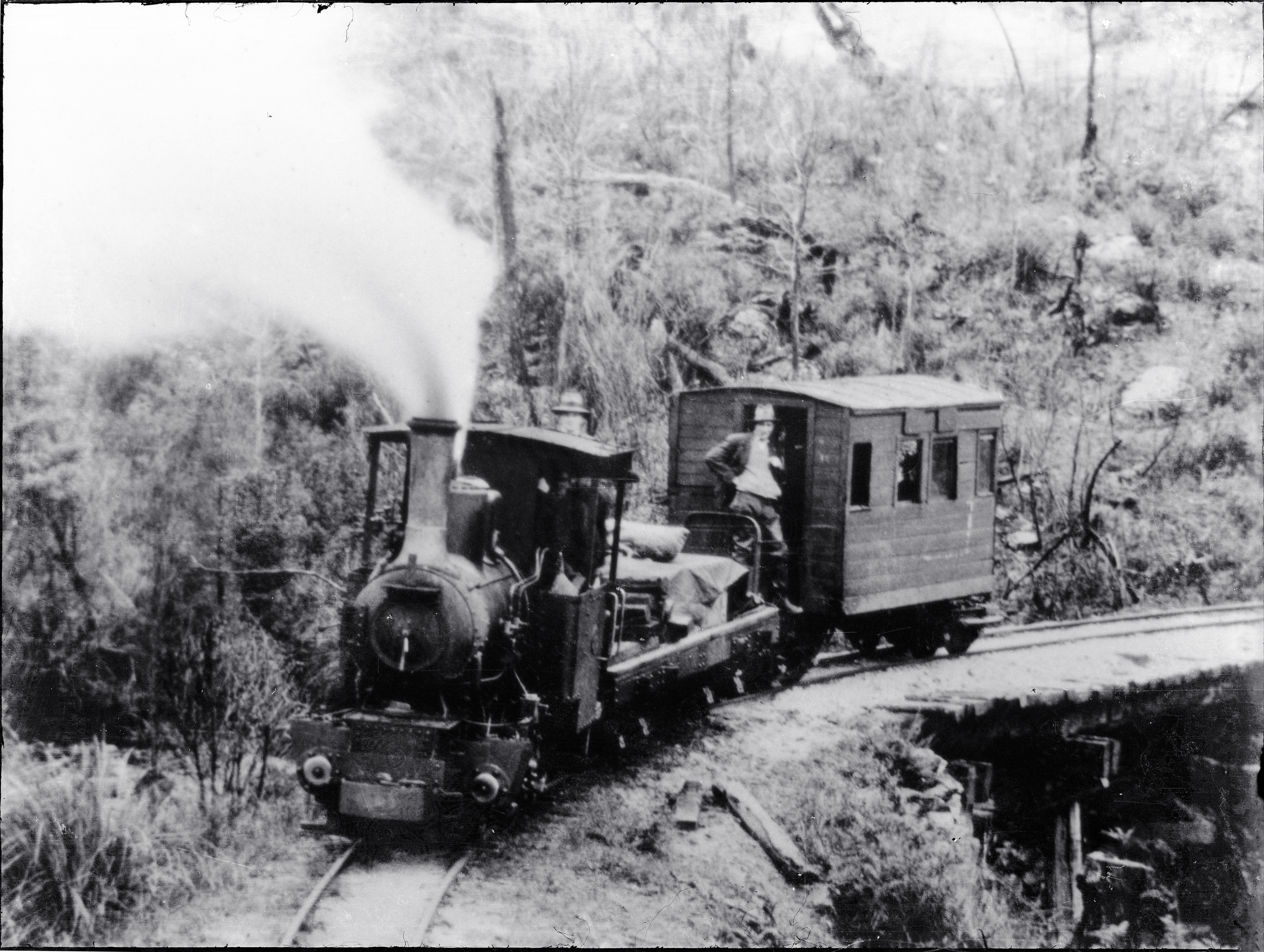
By the 1930s, the quality of the ore diminished and, combined with the Great Depression and falling metal prices, the mine closed. Although milling operations continued, it was a bleak time for the miners and their families in Tullah. Luckily, another richer outcrop of galena was found, and the mine re-opened in 1934, finally closing in 1974.
After 1951, only a 10-ton Krauss 5988 and Wee Georgie Wood operated on the line.
The mine sent about 80 tonnes of silver-lead concentrates to the USA each month.
Wee Georgie Wood’s engine working life ended in late 1963 with the construction of the Murchison Highway, which provided for the first time a road link to many of Tasmania’s isolated West Coast mining communities between Queenstown and Burnie, including Tullah. The highway rendered the tramway redundant.
It hauled ore trucks half a mile from the Mount Farrell mines to the flotation plant at Tullah for a few more years. The Electrolytic Zinc Company took over the Mount Farrell Mining Company in 1964 and decided that Wee Georgie Wood would be displayed at Tullah. The local community group later restored it for historical and tourist service.
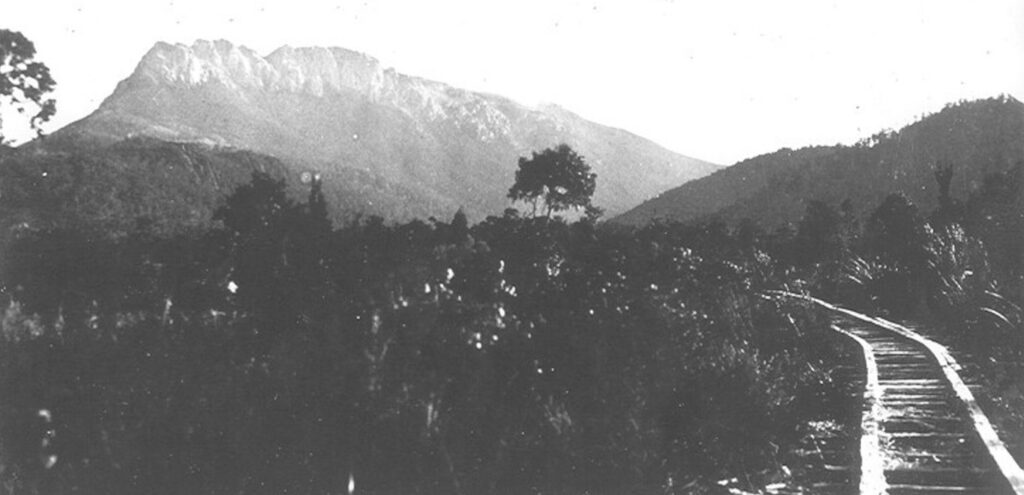
A 1.8-kilometre track was re-established in and around Tullah and Wee Georgie Wood, and a passenger carriage from the Lake Margaret Tramway was upgraded for their use. In early 1987, the Wee Georgie Wood Steam Railway opened for tourists. With the aid of bicentennial funds, a station building was completed.
In 1983, the creation of Lake Rosebery meant that much of the old tramway formation was inundated, but a short section can be walked on the northern side of the lake starting at the Lake Rosebery Water Ski Club on Pieman Road.
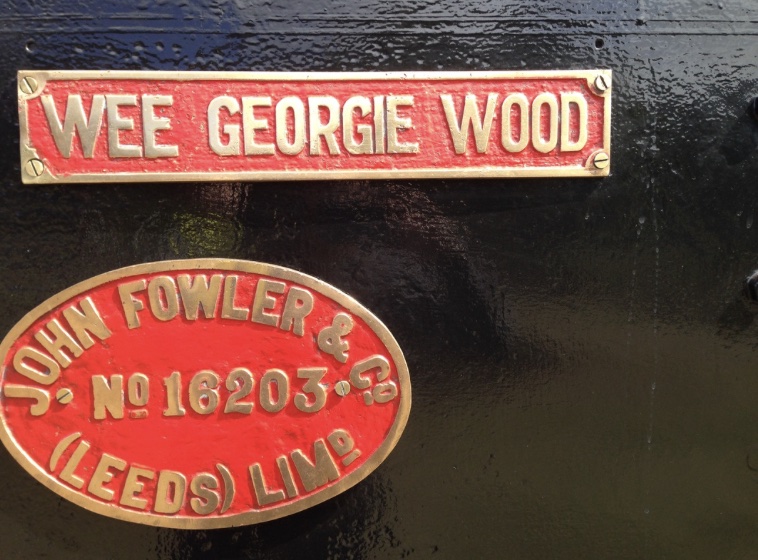
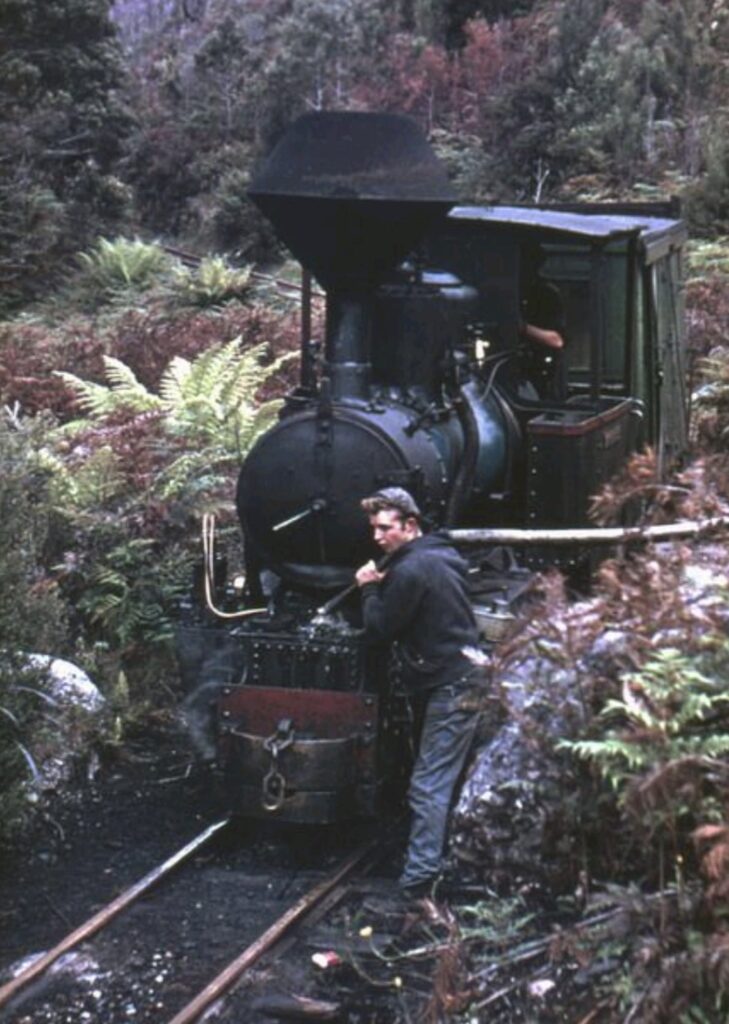
I was always under the impression that there was a tramway, operated by hoses to Boko and later the steam train to Farell, both the same 2ft gauge. I might be wrong.